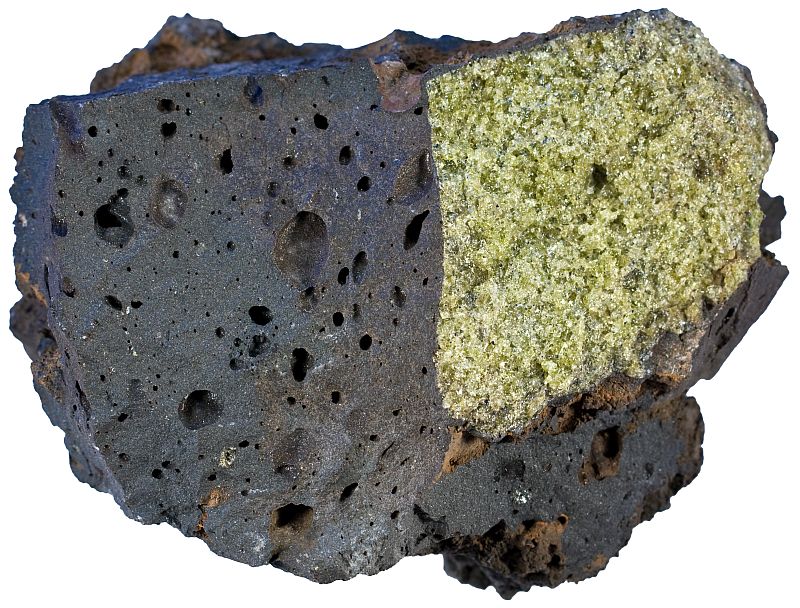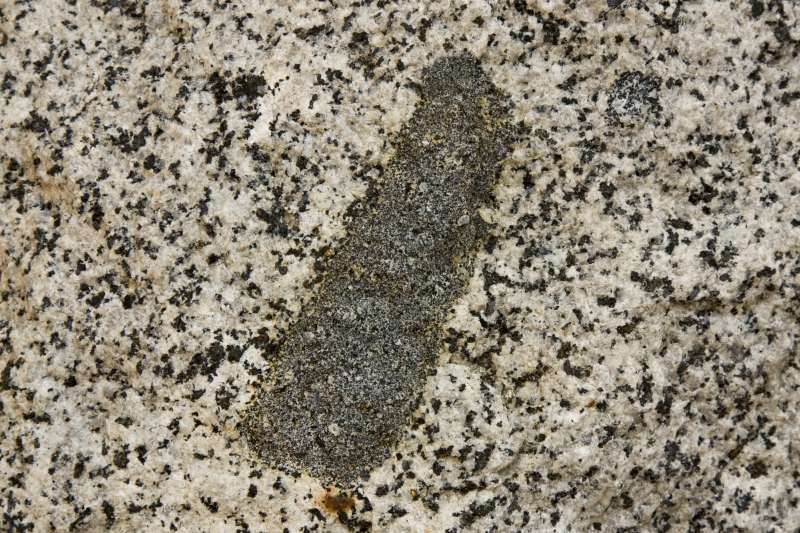Xenolith is a fragment of foreign rock within an igneous rock. Xenolith itself may be whatever type of rock but its host rock has to be igneous. Foreign rocks in other rock types are usually known as inclusions. “Xenolith” means literally ‘foreign rock’, but some xenoliths are not entirely foreign to their hosts. They may be genetically related e.g. gabbro xenoliths in basalt. Such xenoliths are called cognate inclusions or autoliths. They are related because they both crystallized from the same magma.
http://picasaweb.google.com/107509377372007544953/Tenerife#5846710708669175778
Xenolith of pyroxenite in trachytic host rock. Width of the xenolith from La Palma is 7 cm.
True unrelated xenoliths are always older than their host rocks because they had to already exist as a solid rock fragment when the magma around them solidified. But this is not necessarily true with cognate inclusions.
Many xenoliths are carried up from the mantle. They are therefore very valuable to scientists because such xenoliths are almost the only way to know for sure what the mantle beneath the crust is made of.

Dunite xenolith in basaltic lava from Hawaii. The sample is 8 cm in width.

Diorite inclusion in granodioritic host rock of Sierra Nevada batholith in California. At least some of these inclusions seem to have been partially plastic and therefore are probably genetically related to the host rock. It is possible that darker, more mafic material that started to crystallize at higher temperature did not fully mix with the rest because their margins were chilled by the lower temperature more felsic material surrounding them. The inclusion is 10 cm in length.
http://picasaweb.google.com/107509377372007544953/Tenerife#5846734621769199858
What about this rock sample from La Palma? Is it full of xenoliths? Actually not, these are pyroxene phenocrysts, they are integral parts of the whole. Rocks that contain lots of phenocrysts are said to be porphyritic.
Over the years I have owned some beautiful samples of xenoliths but alas as I’ve shifted around had to let them go. (Some were rather big.)Now I just take pictures and (haven’t for some time,) but will rummage for the ones I have and your pics have given me incentive to go rock climbing again with my camera Thankyou…very fine samples too.
Barbara, thanks for your comment! Geologising is the best part of geology for me too. I love taking pictures and looking for rocks in the wild.